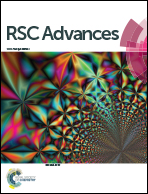The uniqueness and therapeutic value of natural products from West African medicinal plants, part III: least abundant compound classes
Abstract
In this review, a continuation of our in-depth coverage of natural products derived from West African medicinal plants with diverse biological activities has been given. In the previous parts of this review series, the most abundant bioactive compound classes: terpenoids, flavonoids and alkaloids from West Africa were thoroughly investigated. We now focus on the least abundant compound classes (quinones, steroids, phenolics, glycosides, and other classes), having remarkable biological activities. A correlation between the biological activities of the derived compounds and the uses of the plants in African traditional medicine has been established.


 Please wait while we load your content...
Please wait while we load your content...